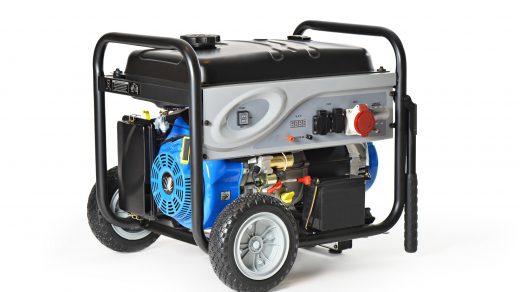What Kind of Generator Do I Need?
There are many types of generators, all varying in size and output, so how do you know how much power you need and which one is the best for you? Finding the most suitable generator requires knowledge about what you are hooking up, what their electrical requirements are and where the power source will be placed.
Instead of looking at the different types of generators first, it is smarter to first calculate required wattage. Then, think about the location, purpose and how often the generator will be used before picking out the model.
This is a quick guide on how to choose the best generator for you.
Important Terms to Understand
Before getting into the calculations and types, it is essential to understand the different terms used to describe a generator and the power requirements of electrical appliances. These are the most crucial aspects to know.
Running Wattage: The output or amount of power it runs on for an extended period of time. Also referred to as continuous power or rated watts.
Starting Wattage: The output or amount of power it can run on for a short period of time. Certain devices require a higher wattage to start running but this requirement drops significantly lower after it is fully running. Also referred to as surge power.
Load: Appliance(s) being powered by the generator. There are 2 types (see below).
Resistive Load: Device(s) with surge power and running power requirements that are very similar.
Reactive Load: Device(s) that requires significantly more starting watts than running watts.
Calculating Power Requirements
Make an estimate of how much power the ideal generator should be able to handle. To do so, follow the steps shown in this blog post: calculate the expected load.
If the label on the electrical item is clear, there is little mathematics to it. However, if the label does not provide the surge watts and rated watts, you need to perform some simple math.
Look at the data tag of the electrical tool. It should state the volts (V), amps (A), cycles (Hz) and sometimes it might also include the horsepower (HP) if it has a motor, and the code which represents the required amps to start.
It is best to calculate with wattages (as in the linked article) but this is not always provided on the data tag. Use the below equations to find the surge power and running power of the load.
Watts (W) = Amps (A) x Volts (V)
Amps = Watts ÷ Volts
The voltage is quite standard in the United States with most devices running on either 120 volts (most regular appliances) or 240 volts (more powerful appliances). Sometimes you can find 120V/240V on a label which means that the load can run on either voltage.
Once you have a list of all the wattages, you can add them together to find the total load. This shows you the total continuous power requirement.
If the surge watts is not shown on the data tag, you can make an estimate from the rated watts. A rule of thumb is to multiply the rated watts by 3 to get the approximate required surge power.
Clearly, reactive loads require more power than might be mentioned on the label. This is why you have to be careful with choosing a generator that has a lower capacity because it might not provide enough starting power.
If you cannot find the data label, you must make an educated guess. Honda provides an extensive list of the most common wattages which you can take as a guiding point.
Calculating Generator Output
Now that you know the load, you can match this to the generator output. Though many product descriptions will mention the continuous power and starting power, it is still worthwhile to work out the exact output in amperage.
Ensuring that the maximum amperage of the generator is greater than the required amperage of the load prevents overloading. Preventing overloading is important because it can cause short circuiting which is damaging to both the generator and the appliances hooked up to it.
This is how to find the maximum amperage on continuous power i.e. what the generator can handle for an extended period of time;
Example values: 2000 watts running power with 120V/240V
Use this equation: Amps = Watts (running watts) ÷ Volts
A = 2000 ÷ 120
A = 16.6
A = 2000 ÷ 240
A = 8.3
Then, make the same calculations but using the surge wattage to find the maximum starting power i.e. the maximum load for a limited period of time.
Use this equation: Amps = Watts (surge watts) ÷ Volts
A = 2800 ÷ 120
A = 23.3
A = 2800 ÷ 240
A = 11.6
Knowing these values, you can match the maximum generator output to the maximum load. Keep in mind that the maximum output should always exceed the maximum load.
Best Generator Type
Now that you have all the information on the power requirements for both the generator and load, you can start looking for the generator that meets these demands. When looking for a new generator, keep in mind where and how often you will be using it but also the type of load.
For example, you might want a different portable generator for camping as you would for powering the entire house during a snow storm. Also, think about how the pollution, in terms of exhaust fumes and noise, affects your area.
Here is a quick introduction to the different types of generators and for which purposes they are most suitable for.
Home Standby Generator: A stationary model that is powerful enough to power all the electrical appliances in a home. This type turns on automatically whenever there is a power cut and is usually connected to the home’s natural gas supply for an unlimited fuel source.
A home standby generator is most suitable for households that experience frequent power cuts, for example regions with extreme weather conditions. However, buying one and installing one is a big investment so this is not the best option for a household on a budget.
Average Output Range: 20,000 watts – 50,000 watts
Conventional Portable Generator: Most popular type because it is so versatile; version can be moved around, has a big range in both power and price and there are several fossil fuel options available. There are more lightweight purposes for personal use and heavy duty models for construction sites etc.
This is a good choice for a smaller budget and for those wanting to use the generator for several purposes. The downside is that it is noisy and must be placed several feet away from any buildings for safety reasons.
Average Output Range: 3,000 watts – 15,000 watts
Inverter Generators: These are generally a smaller capacity but built for ultimate portability and providing clean energy that is safe for sensitive electronics like mobile phones and drones. Inverter models run much quieter and are generally more fuel-efficient.
This is the perfect model for camping and tailgating. You can also compensate for the lower output by choosing a model with parallel capabilities which lets you connect 2 at the same time for double the power.
Average Output Range: 1,200 watts – 4,000 watts
Solar Power Generators: This is essentially a portable power station that can also be charged through a regular wall outlet. This type runs the cleanest and the most quiet because it does not rely on fossil fuels.
This is the only type of generator safe for indoor use and so safe for powering a sleep apnea machine. It is also safer choice for areas where you don’t have access to fuel but there is sunshine.
Average Output Range: 800 watts – 2,000 watts
Read more about the different types of generators in our best generator reviews.


